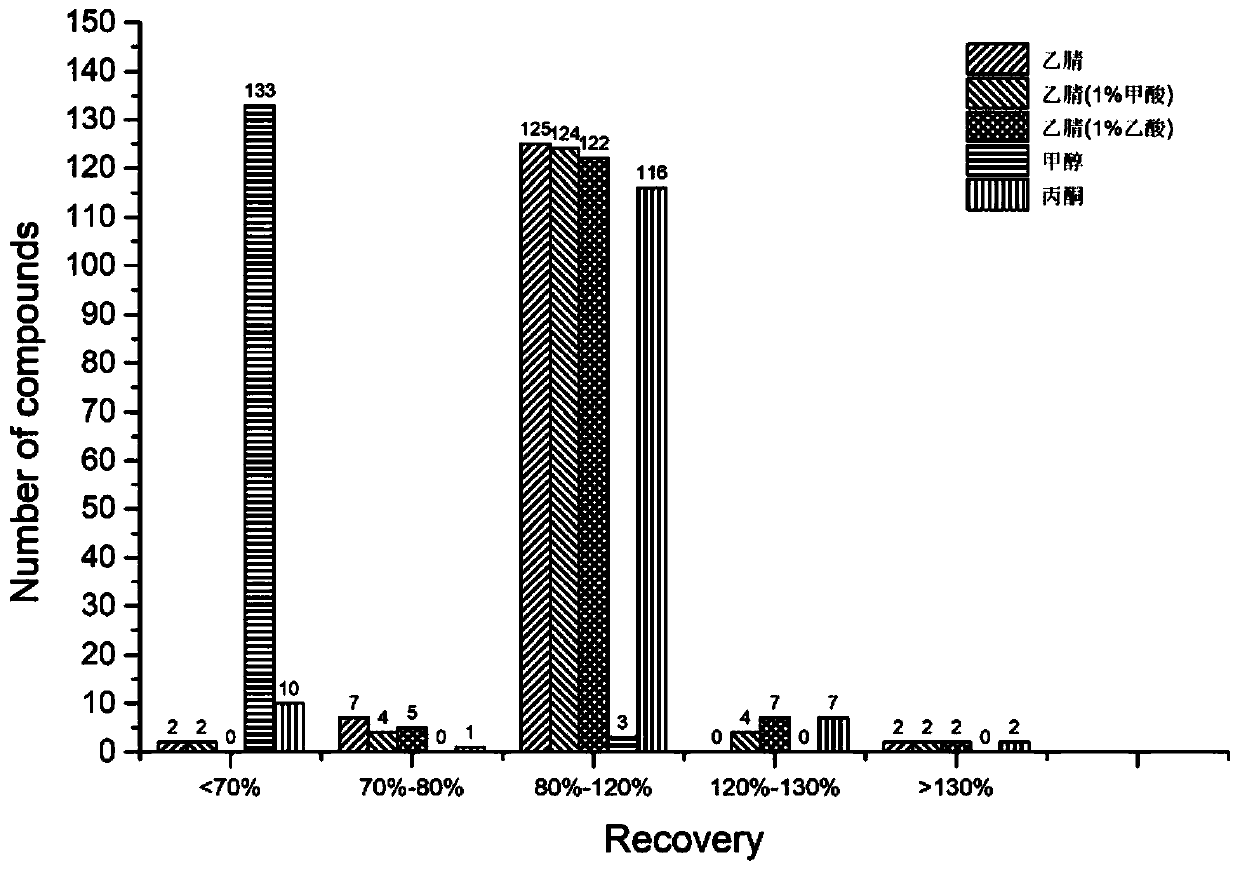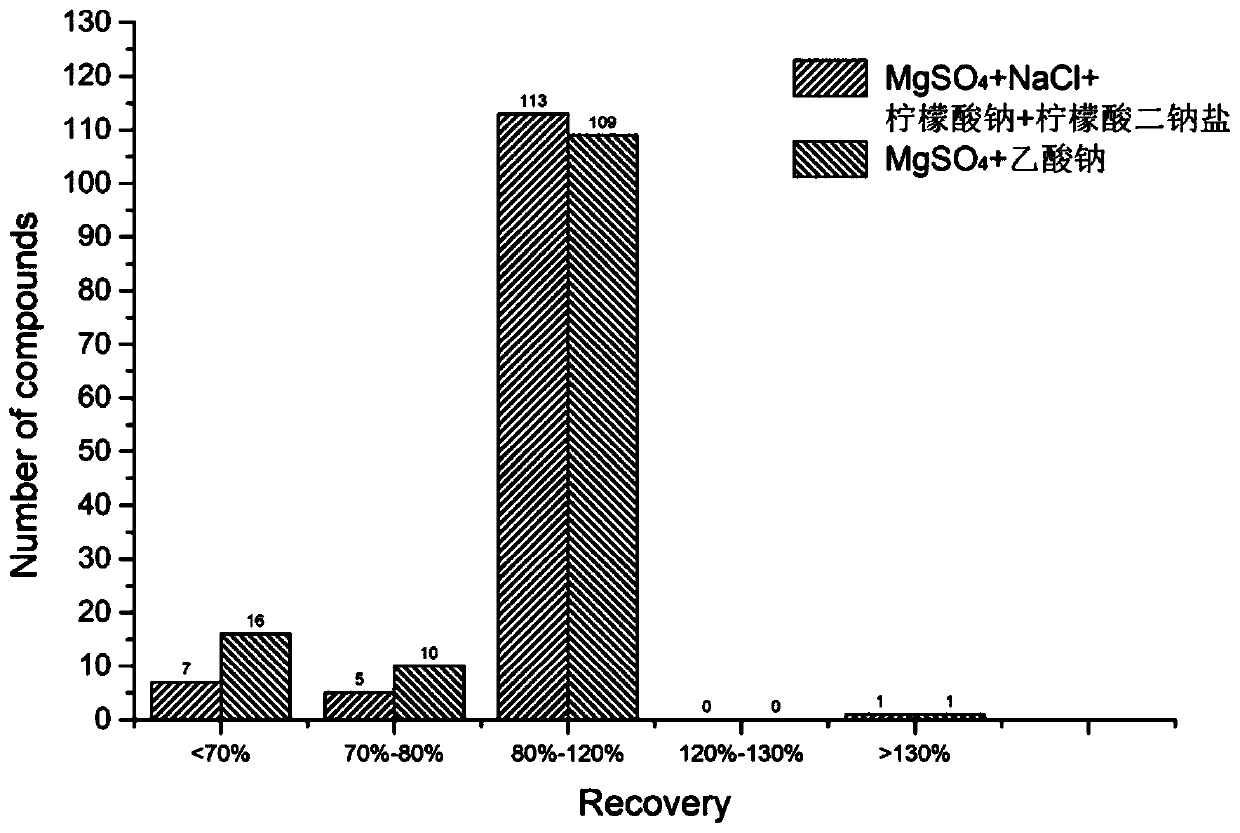A lc-qtof-ms screening analysis method for pesticide residues in animal food
A technology for animal food and pesticide residues, which can be used in the analysis of materials, material separation, instruments, etc., and can solve the problems of long time, complex matrix components, and large consumption of organic solvents.
- Summary
- Abstract
- Description
- Claims
- Application Information
AI Technical Summary
Problems solved by technology
Method used
Image
Examples
Embodiment 1
[0055] 1. Instrument working conditions:
[0056] Chromatographic conditions:
[0057] Mobile phase A is an aqueous solution containing 5mmol / L ammonium formate and 0.1% formic acid; mobile phase B is an acetonitrile solution containing 5mmol / L ammonium formate and 0.1% formic acid; the gradient elution program is: 0min: 5% B, 0.5min: 5%B, 3.5min: 50%B, 17min: 100%B, 20min: 100%B, 20.1min: 5%B, last run for 2min; flow rate: 0.4mL / min; column temperature: 35℃; injection volume : 2 μL.
[0058] Mass Spectrometry Conditions:
[0059] The ion source spray voltage of Agilent 6545 LC-QToF-MS mass spectrometer: 3500V; ion source temperature: 450°C; drying gas flow rate 6L / min; sheath flow rate 11L / min; sheath flow gas temperature 350°C; The scanning mass-to-charge ratio ranges from 50 to 1700, and the internal standard reference solution is used to correct the mass accuracy of the instrument in real time, and the mass spectrometry data is collected and processed through AgilentMas...
PUM
 Login to View More
Login to View More Abstract
Description
Claims
Application Information
 Login to View More
Login to View More - R&D
- Intellectual Property
- Life Sciences
- Materials
- Tech Scout
- Unparalleled Data Quality
- Higher Quality Content
- 60% Fewer Hallucinations
Browse by: Latest US Patents, China's latest patents, Technical Efficacy Thesaurus, Application Domain, Technology Topic, Popular Technical Reports.
© 2025 PatSnap. All rights reserved.Legal|Privacy policy|Modern Slavery Act Transparency Statement|Sitemap|About US| Contact US: help@patsnap.com



